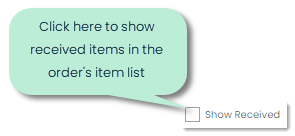Table of contents
Getting Started with Receiving
Tuesday February 27, 2024-7 min readIntroduction
The Receiving app is used to document the times, dates and locations of shipments received by your organization. This guide will cover how to follow up on Purchase Orders and receive your ordered items.
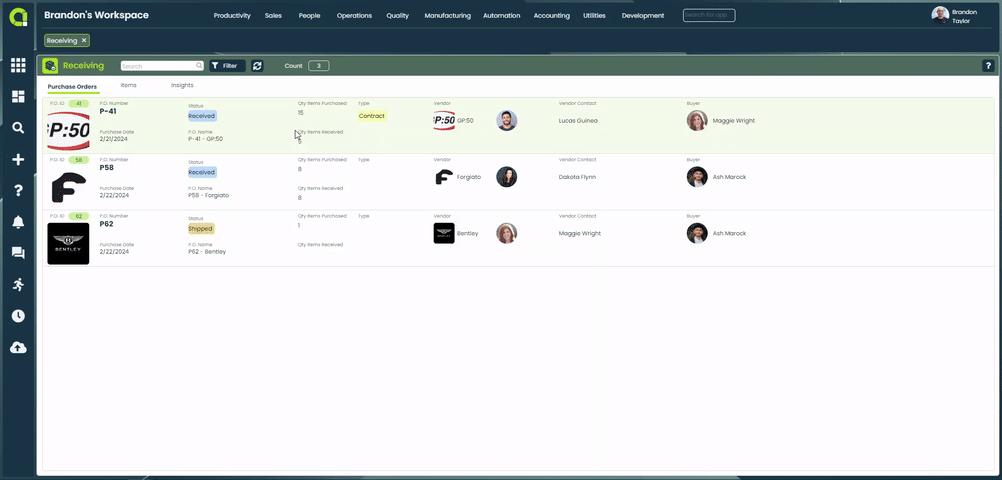
Let’s get started
To open the app, navigate to the Operations category of the main navigation bar and select Receiving from the dropdown.
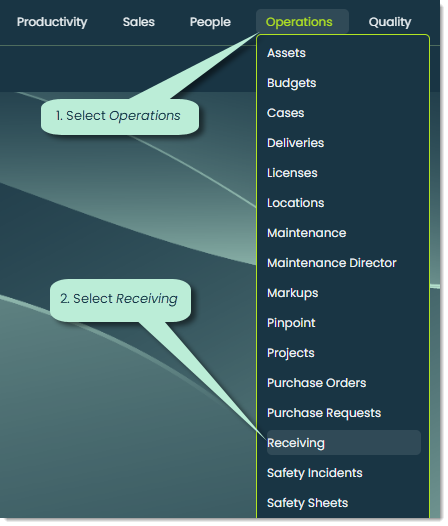
When you open the app, you’ll see three main tabs at the top.

Purchase Orders – Here, you can view a list of orders from your Purchase Orders app. Each order includes the following fields:

- P.O. Number – This is a unique identifier assigned to each purchase order for tracking and reference purposes.
- Purchase Date – This is the date on which the purchase order is created or issued.
- Status – Status indicates the current stage or state of the purchase order within the procurement process.
- P.O. Name – This refers to the name or title assigned to the purchase order for easy identification. It may include a brief description of the items being purchased or the purpose of the order.
- Qty Items Purchased – Quantity of items or units being ordered as specified in the purchase order.
- Qty Items Received – Quantity of items or units actually received from the vendor.
- Type – Type refers to the classification or category of the purchase order. You can define your own types or choose from the list provided.
- Vendor – The name of the supplier or vendor from whom the goods or services are being purchased.
- Vendor Contact – This is the contact person or representative from the vendor’s organization responsible for handling communications and transactions related to the purchase order. It provides a point of contact for inquiries or issues.
- Buyer – The name or identifier of the individual or department within the buyer’s organization responsible for initiating, approving or managing the purchase order. It denotes the internal party responsible for procurement activities.
Items – Here, you can view a list of all the items from the purchase orders. Each item includes the following fields:

- PartID – This is a unique identifier or code assigned to each part or item listed in the purchase order.
- Part Number – This is a distinct alphanumeric code or identifier assigned to each part or item in inventory. It uniquely identifies the item and facilitates accurate ordering and inventory management.
- Part Name – This is the descriptive name or title of the part or item being ordered. It provides additional information about the item beyond its part number, helping to identify it more easily.
- Quantity – Quantity indicates the number of units or items being ordered for a particular part or item listed in the purchase order.
- Manufacturer – The name of the company or entity that manufactures the part or item being ordered.
- Quantity Purchased – This field represents the total quantity of the part or item that has been purchased across all purchase orders.
- Quantity Received – This indicates the total number of units of the part or item that have been physically received from the vendor. It is updated as items are delivered and received by the buyer.
- Price per unit – Price per unit specifies the cost of each individual unit of the part or item being ordered. It helps in calculating the total cost of the order and assessing the unit cost of the item.
- Cost – This represents the total cost of purchasing the specified quantity of the part or item.
- Transaction – This denotes the type of transaction associated with the item, such as “Purchase,” “Receive,” “Exchange,” etc, as well as the quantity of items for that transaction, the date it happened, and for what kind of object the transaction was for (in this case “Purchase Order” since this is for a purchase order
You can efficiently track transactions by item from the Items tab.
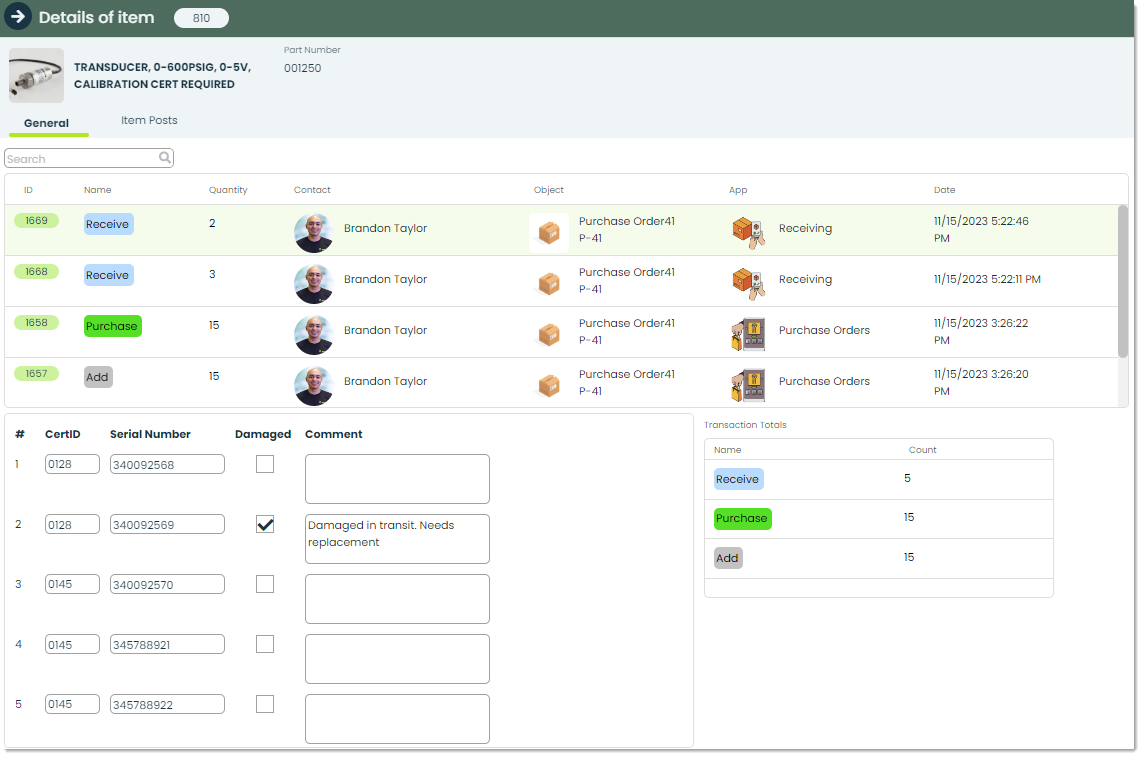
For any given item, you can see each of the transactions, the quantity associated with it and which Purchase Order it comes from. You can also note-take the certifications and serial numbers for each item, as well as whether or not the item was damaged in case any replacements are needed.
Insights – The Insights tab lets you create and view analyses related to Receiving. These analyses help you uncover patterns and trends in your data, enabling informed decisions and process improvements. For Receiving, you could analyze things like efficiency in receiving processes, vendor performance and supply chain effectiveness. While Appward provides a default Insight for most apps, you can create your own custom insights for whatever your business wants to track. For a deeper look on using Insights, check out our article on Getting Started with Insights.
How to view and receive a Purchase Order
From the Purchase Orders tab, you can click on any order from the list to open its details.

Here, you can see each item that is included in this order, the current quantities, etc. To indicate that you’ve received specific items, you can click the Receive button next to the item that has been received.

From here, you can track the quantity of each item that has been received. Additionally, you have the option to update the quantity for a new batch that has arrived separately.
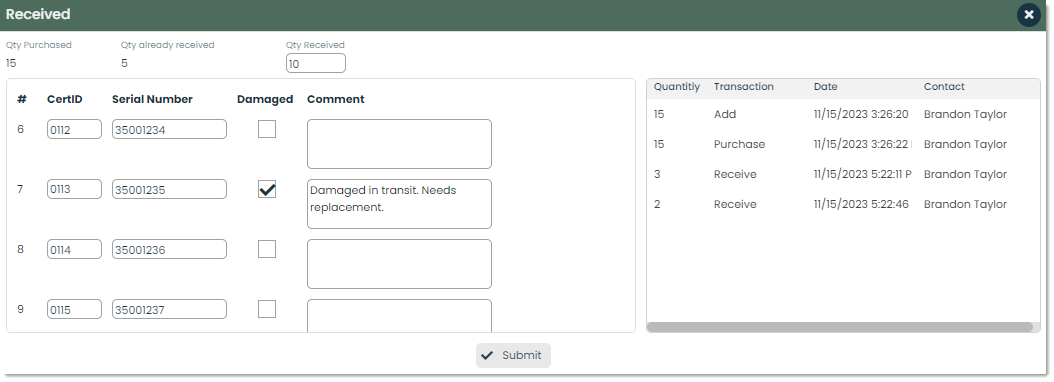
After you click Submit, a new “Receive” transaction will appear under Transactions now.
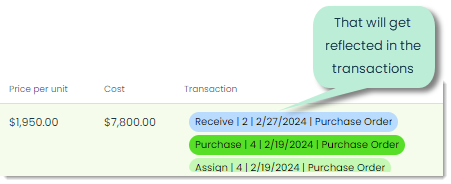
Once you’ve received the entire quantity ordered for an item, it will be removed from the list. To view these removed items, you can check the box for Show Received to see what has already been accounted for.
